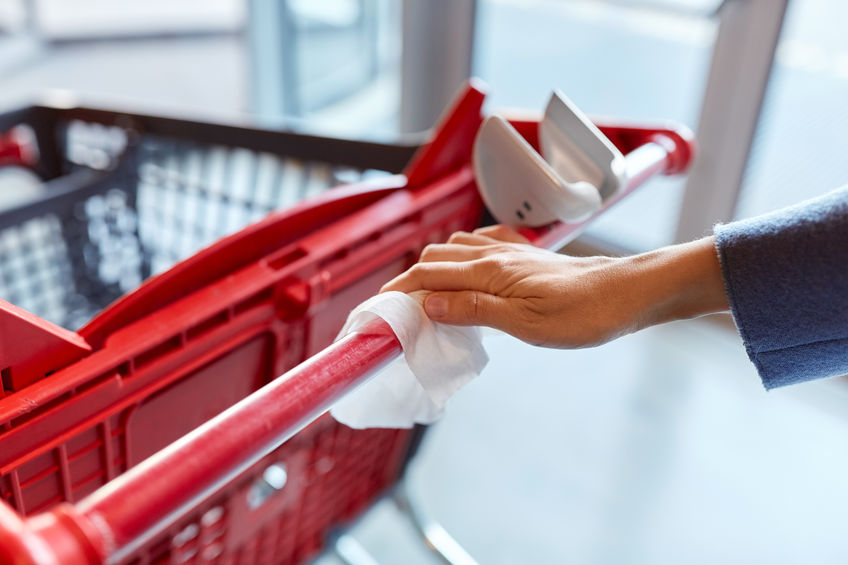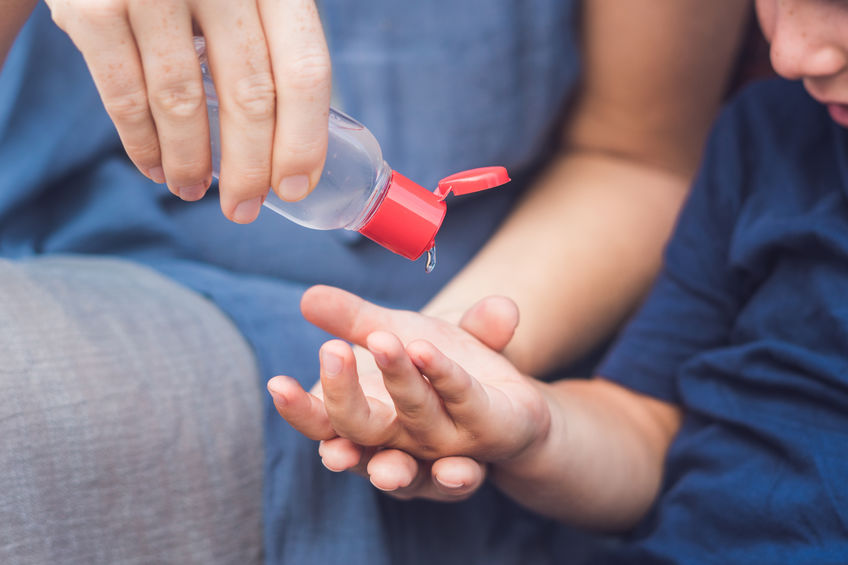One of the most effective ways to keep germs and viruses at bay is to keep your hands clean at all times. Frequent handwashing with soap and water is one of the best ways to prevent diseases like the flu and COVID-19, however, when soap and water are not readily available, hand sanitizer is the next best option.
As the pandemic sets itself deep within our communities, we have seen hand sanitizer fly off shelves unlike any product before… with the exception of toilet paper. Due to this high demand, shops are struggling to keep them in stock, and those few who do have a couple of bottles on hand are more than likely adjusting prices to meet the demand. While we anxiously wait and pray for all the hardworking scientists and researchers to create a breakthrough treatment or vaccine to combat COVID-19, hand sanitizer and disinfectant wipes are going to remain a necessity in our lives for next few months or even years in the future.
Unfortunately, with the havoc this virus has caused in the economy, buying quality hand sanitizers and disinfectant wipes is an extra expense some of us can not afford, especially with the rising prices. The good news is that you can save a buck or two by making your own hand sanitizer and reusable disinfectant wipes at home safely.
The ingredients in these DIY recipes do contain a high potency of alcohol so it is important to read the instructions carefully and ensure you make the mixture in a well-ventilated area away from children and pets.
Let’s get started…
Isopropyl Alcohol Safety
The vodka or other spirits you have in the kitchen cupboard are not going to do the trick when it comes to destroying The CoV E protein membrane of the SARS-CoV-2 virus. The only chemical that stands a chance at destroying these microscopic invaders is to use Isopropyl alcohol.
However, it is exceptionally important that you are extra cautious when mixing up your own sanitizers as isopropyl alcohol or rubbing alcohol is extremely flammable when exposed to open flames, heat, or a spark.
When working with this chemical, it is important to be cautious and wear protective gloves and safety goggles if possible. It is readily absorbed by the skin in small doses, however, an accidental spill could be dangerous. Excessive use can cause the skin to dry, crack, or become inflamed so it is important to only use rubbing alcohol-based sanitizers only when necessary. If you have access to water and soap, it is always best to use this hand hygiene method instead.
When purchasing rubbing alcohol, look for one that contains at least 70 to 90 percent isopropyl alcohol as this is the potency required to effectively kill germs and viruses.
DIY Gel Based Hand Sanitizer
For those who prefer a gel-based hand sanitizer, this is an easy recipe that takes minutes to whip up.
The Supplies
- 6 tablespoons of 70 to 90 percent isopropyl alcohol
- 3 tablespoons of aloe vera gel
- 1 ½ teaspoons of vegetable glycerine or vitamin E oil
- A few drops of essential oils like lavender or tea tree oil to prevent your hands from drying out
The Instructions
Mix all the ingredients together in a bowl or jug for easy dispensing. This recipe yields 6 fluid ounces so be sure to have a small sealable jar or bottle to keep it in. pour the mixture into the jar using the jug. To make it easier, use funnel to dispense into the container.
DIY Hand Sanitizer Spray
If you prefer to have a sanitizer on hand that you can use to spray down groceries or quickly sanitize a bottle of water and your hands on the go, this is a great recipe to try.
The Supplies
- 12 fluid ounces of 70 to 90% isopropyl alcohol
- 2 teaspoons of glycerol or glycerine to prevent your hands from drying out
- 1 tablespoon of hydrogen peroxide
- 3 fluid ounces of distilled or boiled and cooled water
- A few drops of essential oils like lavender or tea tree oil
The Instructions
Mix the ingredients together in a bowl or jug and dispense into a spray bottle. This recipe yields 15 fluid ounces so be sure to have a spray bottle that is big enough. If you are unable to find glycerol, which acts as a humectant, you can substitute it for other skincare oils that act as emollients such as sweet almond oil, argan oil, or olive oil.
DIY Reusable Disinfectant Wipes
These disinfectant wipes are handy to wipe down any surface at home or when you are out and the best part is that they are 100% reusable. This is exactly what we need to minimize plastic and other waste at a time where single-use plastics are becoming more and more available and harmful to the environment.
The potent ingredient in these wipes is diluted bleach, which according to experts is effective at killing viruses such as the SARS-CoV-2 on most surfaces. The key to the potency of these wipes is looking for the correct bleach. Bleaches like Clorox have a wide range of products that vary in strength. For example, the splash less rage of products has a much lower potency than other types of bleach. For this recipe, you’ll want to look for the following Clorox products:
- Concentrated Clorox Disinfecting Bleach2
- Concentrated Clorox Performance2 Bleach
- Concentrated Clorox Germicidal Bleach4
The Supplies
- Kitchen swabs or microfiber cloths (small)
- 1 gallon of water
- ⅓ cup of bleach (recommendations above)
- A tall airtight container
Be sure to wear gloves and old clothing while preparing the mixture.
The Instructions
Pour both the water and bleach into the airtight container. Be sure not to fill it too much as the cloth will cause some of the solution to spill over. Submerge the cloths in the solution and allow it to soak for at least 5 minutes. When you are ready to disinfect a surface, remove one cloth from the solution, and wipe down the surface. Allow the surface to dry for at least 5 minutes before touching it. If you are using the wipes on a toy or kitchen utensil, be sure to rinse it with warm water 5 minutes after using the disinfectant wipes.
Always wash the wipe and rinse it well before putting it back into the airtight container with the disinfectant solution.
DIY Alcohol Based Disinfectant Wipes

If you are worried about accidentally ruining your clothes and other surfaces, you can make disinfectant wipes using 70 to 90% isopropyl alcohol instead. Simply fill an airtight container with isopropyl alcohol and pop the reusable kitchen swabs or microfiber cloths into the solution. If you want disinfectant wipes on the go, pop a few cloths that have been soaked in the isopropyl alcohol into a ziplock bag. Once you are done with the wipes, wash them and pop them straight back into the airtight container for later use.
How To Use Hand Sanitizer Correctly
In order for any hand sanitizer to be effective, it is important to use it correctly. Start by squeezing or spraying an ample amount into the palm of your hand. Rub your hands together first and then spread it to the back of your hands, between the fingers and onto the back and front of your thumbs. Work the sanitizer in for at least 60 seconds or until it has completely dried and absorbed into the skin. If your hands are really dirty and greasy, be sure to wash them for at least 20 seconds with soap and warm water before using sanitizer.
The alcohol will dry your hands out so be sure to always moisturize them. Sometimes this is not always an option due to how often we wash and sanitize our hands when we are out and about, however, treating your hands to a revitalizing cream mask before bed every night will help keep them soft and supple. All you need to do is apply a thick layer of cream to the palms, fingers, and back of your hand. Then let the cream sit for a good 10 minutes before rubbing it in.

